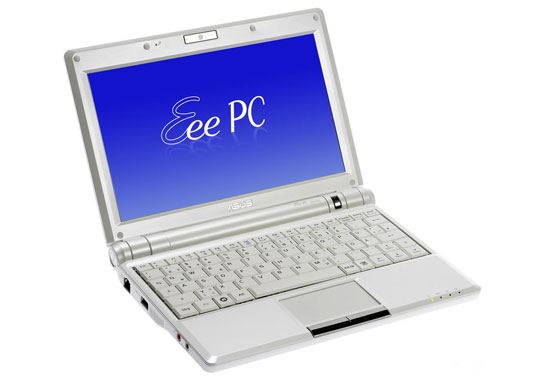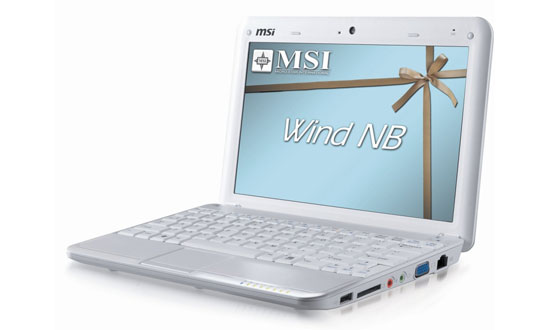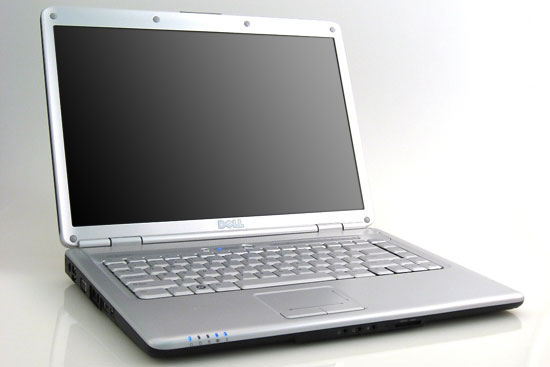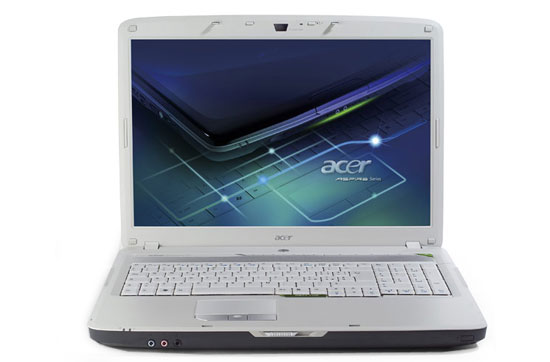Budget Laptops
Trying to keep prices down to around $500 or less invariably means one thing: there will be some serious compromises. These compromises may come in one or more areas, and how big of a problem they are will depend in part on what you're looking for in a laptop. Five years ago, finding anything even remotely worth considering for under $500 usually meant you were buying a used laptop from a friend, but today there are more options than you might expect. We will extend the budget offerings to include laptops that cost as much as $650, just to give you an idea of what you get for the extra $150.

One of the most noteworthy products to launch in the mobile space last year is undoubtedly ASUS' Eee PC. With prices starting as low as $300, a lot of people were tempted to pick one up as a cheap ultraportable. We had some complaints about the overall Eee experience, but provided you understood its limitations and you didn't mind the ultra-tiny keyboard, the Eee PC 701 was a useful accessory. ASUS has since addressed quite a few of our complaints with a slightly larger version, and in fact they've seen such success with the Eee PC that they've inflated the Eee family to include numerous other options - though unfortunately the prices on many of the additions fall above $500.

ASUS isn't the only player in this market of course, with competition from the MSI Wind, HP 2133, Acer Aspire One, and Dell Inspiron Mini to name a few. Not all of those are currently available, and not all of them clearly surpass the original Eee in all areas. We think the MSI Wind with a 6-cell battery is the most promising of the lot right now, but you'll need to wait for the 6-cell battery (and it can be difficult to find a Wind in stock right now). While you're waiting, look for the Eee PC 1000 and Dell Mini and see what they bring to the table, though many of these will cost closer to $600 rather than $500. Given that the Eee PC 901 just launched at a price of $600 and appears quite similar to the Wind (including a 6-cell battery), ASUS continues to lead the subnotebook market.
Small, relatively slow subnotebooks aren't the only option for budget laptops, however. Especially once we start to push into the $600 price range, a lot of the big OEMs have budget offerings that outperform the subnotebooks in most areas. The one area where they fall short is size, of course, but many people are willing to sacrifice size in order to get a more comfortable keyboard. Pay attention to the features and specs to make sure you know what you're getting, though! We looked at most of the major vendors to see what we could find in the budget price range. Sales come and go, so some of what we found may not be available for long, but at least this should give you an idea of what you can expect to find in a sub-$650 notebook.

Dell has the Inspiron 1525 and 1420 starting at $500 and $650 respectively, and much of the Vostro line starts at under $600. The Inspiron 1525 is definitely a budget offering, with many features trimmed too far in our opinion - like the 28 WHr battery. If you don't need mobility, though, and you like the larger 15.4" chassis it's still worth a thought. The 1420 adds a Pentium Dual-Core processor, doubles the battery capacity, and drops the size to 14.1" while increasing the cost. HP has similar offerings and prices, but right now they have some instant rebates that give them the advantage. One example is the HP C700T; the base $430 model (with the current $200 rebate) comes with a Pentium Dual-Core T2370, 1GB RAM, 120GB HDD, and 6-cell battery in a 15.4" chassis. The dv6700t and dv6700z are two more 15.4" models to consider, carrying Intel and AMD CPUs respectively. The 14.1" dv2700t is another option to look at; with the current price of $700 it's a bit outside of the "budget" category, but it does include 2GB RAM.

Acer and Gateway are now under the same corporate umbrella, but they continue as distinct product lines. The easiest place to find attractive prices on Acer notebooks is places like Newegg, with models starting at $400 and numerous options priced under $600 - there's even a 17" monster (the 7720) with 1440x900 LCD for $500, if small isn't your thing. The only laptop at the Gateway site that meets our "around $500" price is the M-152S, which is currently on sale for $600. If you act fast, this is a serious bargain (a $300 rebate), as it comes with 2GB RAM and some of the most powerful components in a "budget" offering.
These aren't the only options out there for laptops priced under $650, of course. Toshiba, Lenovo, and others have similar laptops for sale. Newegg has plenty of laptops priced under $650 that are worth a look (including many of the laptops already mentioned here), and you might also want to check out your local electronics stores to see what they have.
Generally speaking, what we'd recommend in this price range is to either grab one of the subnotebooks with an Intel Atom CPU like the MSI Wind or ASUS 901 Eee PC (if you can find one in stock), or else look at some of the "normal" notebook options. For a price of between $500 and $600, you should get some form of dual-core processor (Pentium Dual-Core or Turion X2 are relatively competitive), around 120GB 5400RPM HDD with a DVD burner, and at least 1GB of RAM - 2GB being a far better option for Vista, though you can upgrade the RAM yourself for under $50 if necessary. We generally prefer 14.1" notebooks if possible as they strike a nice balance in terms of size and features, but they cost more. A couple things to pay attention to are the warranty and battery capacity; the low price on many of these laptops may be due in part to a shorter warranty, and we'd recommend getting at least a ~55 WHr battery if possible.










28 Comments
View All Comments
jmurbank - Friday, July 18, 2008 - link
I also agree buying a notebook should be based on quality, battery, screen or size. The so called guide is more like a price comparison than a real guide. A real guide will tell the reader to ask themselves questions what they need in the notebook or what they are going to use the notebook for in a certain environment.If the guide is realistically, budget notebooks can rise up to high-end prices after including extras. Let us see, my Dell Inspiron 1520 costs around $1700 after including some upgrades to suit my needs. After a corporate or employee discount from a relative or friend, it made it $300 cheaper which is $1400 for the final price.
I would say I got a good notebook computer compared to the problems I am experiencing because it gets 4 to 6 hours of battery life for general tasks in either Windows and GNU/Linux with the use of the 9 cell battery, and nVidia GeForce8 8400M GS that eases multiple monitor setup and decent 3D performance in games. The upgrade to Intel WiFi 3945 helps setting up WiFi in GNU/Linux easier. The choice of a brighter display instead of a wide-angle high resolution display also helps the battery usage last longer since I do not have to use the full brightness. The lowest brightness is bright enough to see the screen. The glossy display is a little annoying while being around bright sources such as at the airport or outside. It is hot even though I picked a T7300 processor and stuck with 2 GB of DDR2-667 memory (two modules of 1 GB).
I would gauge my notebook quality as 3.5, portability a 7, and size a 6.
I would not care about what matrices design that the LCD is constructed. I would care more if notebook manufactures tells us consumers the LCD screen is 6-bit or 8-bit because there is a difference in the amount of colors. One is 18-bit color while the other is 24-bit color. If you think of not seeing 16515072 colors is something not to complain about, then people have a lot to learn. Not seeing 16515072 colors is color blindness.
fabarati - Saturday, July 12, 2008 - link
Ok, beginner was a bit of an overexageration. You're at an intermediate level.dblevitan - Saturday, July 12, 2008 - link
I'm surprised the only mention of Thinkpads is the x61. The T series is probably one of the most popular laptop series created and are some of the sturdiest laptops around. Sure, they're not as flashy as many laptops but they have good performance, are reliable, and just work. And they're surprisingly inexpensive.Mafiacrime - Friday, July 11, 2008 - link
http://www.mafiacrime.org/r.php?id=5320">http://www.mafiacrime.org/r.php?id=5320Come check out Mafia Crime!!
microAmp - Friday, July 11, 2008 - link
Yay for spam!SniperWulf - Friday, July 11, 2008 - link
Or the P-6831FX for that matter?JarredWalton - Friday, July 11, 2008 - link
I suppose at 8000 words, I can't expect people to read everything. Check page 5 where I mention both (and page 3 mentions the 6831 briefly as well). I did after all give the 6831 a Gold EC award, so you can hardly expect me to forget about it. :)Gast - Friday, July 11, 2008 - link
No apple notebooks? Even if you do have to purchace Windows, I consider them a contender. Esp with their support. (Yay for 2 lightning strike iBooks replaced @ no charge).microAmp - Friday, July 11, 2008 - link
Did you skip page 6?Gast - Friday, July 11, 2008 - link
I did. And I also missed the brief mention of the MacBook in the earlier pages. Shame on me for not reading the article close enough, much less the entire article.The entire article does kinda gloss on warentee information, which is where I see Apple truely shining. *shrugs* Fair review I'd say though.